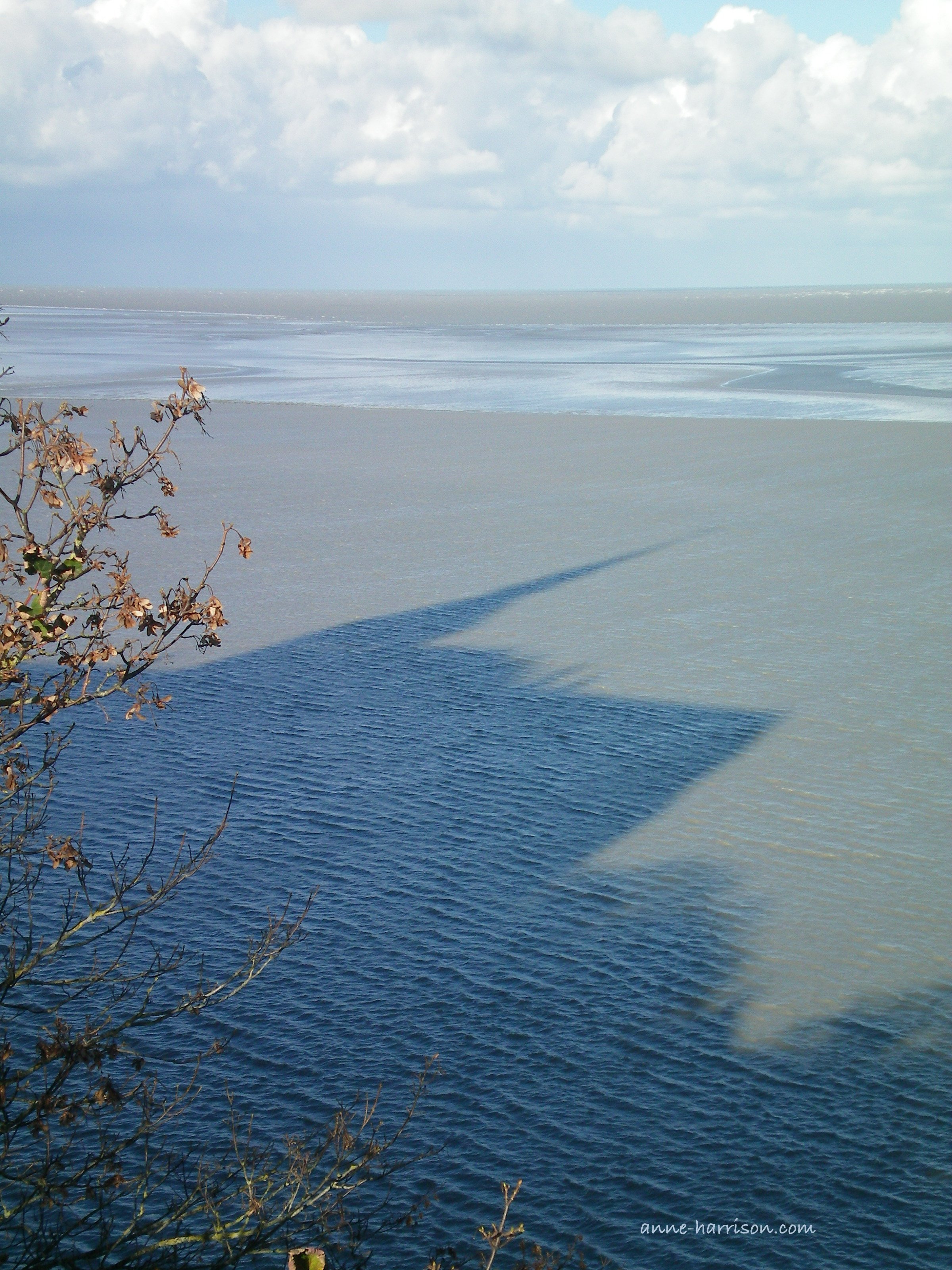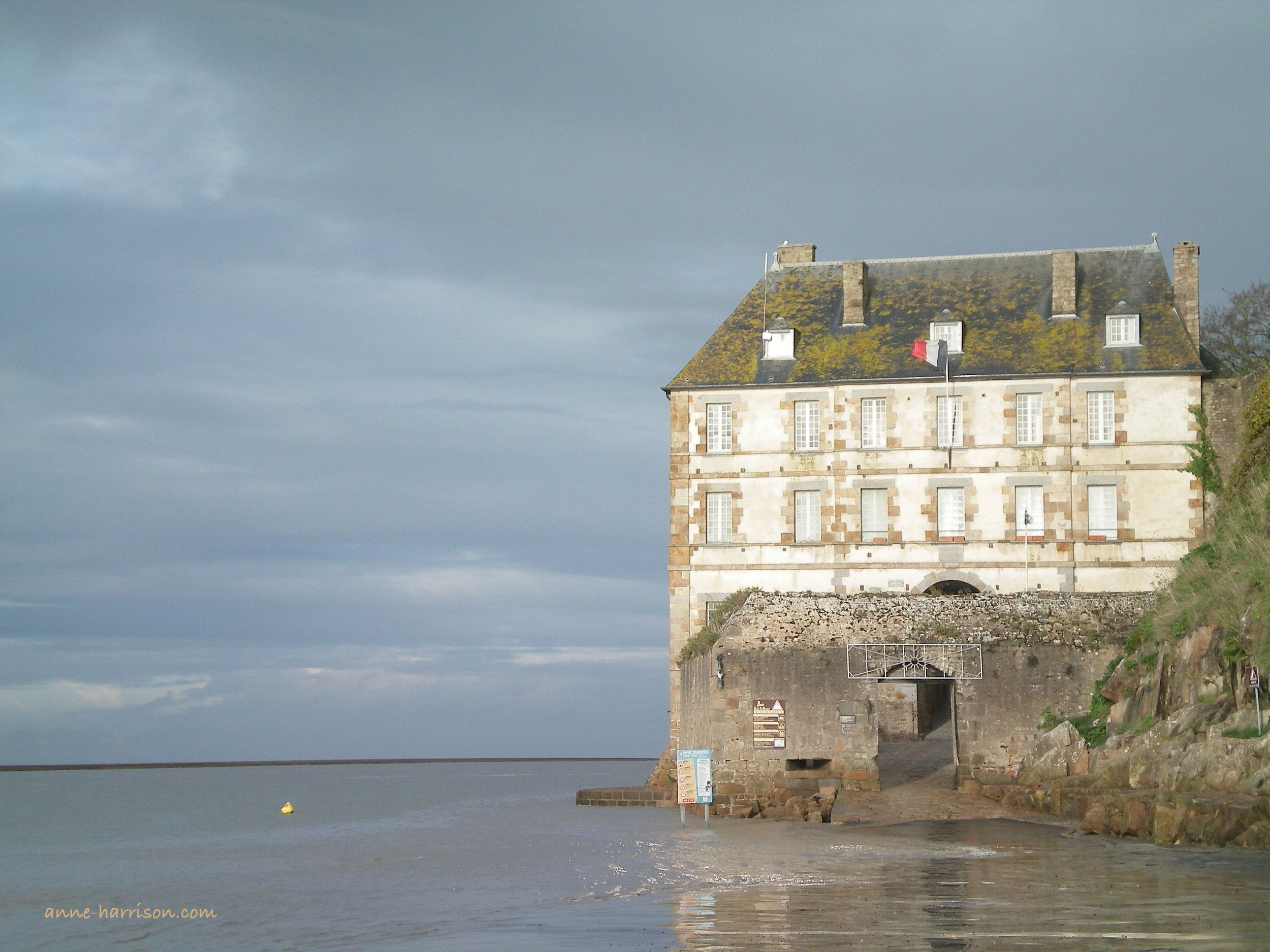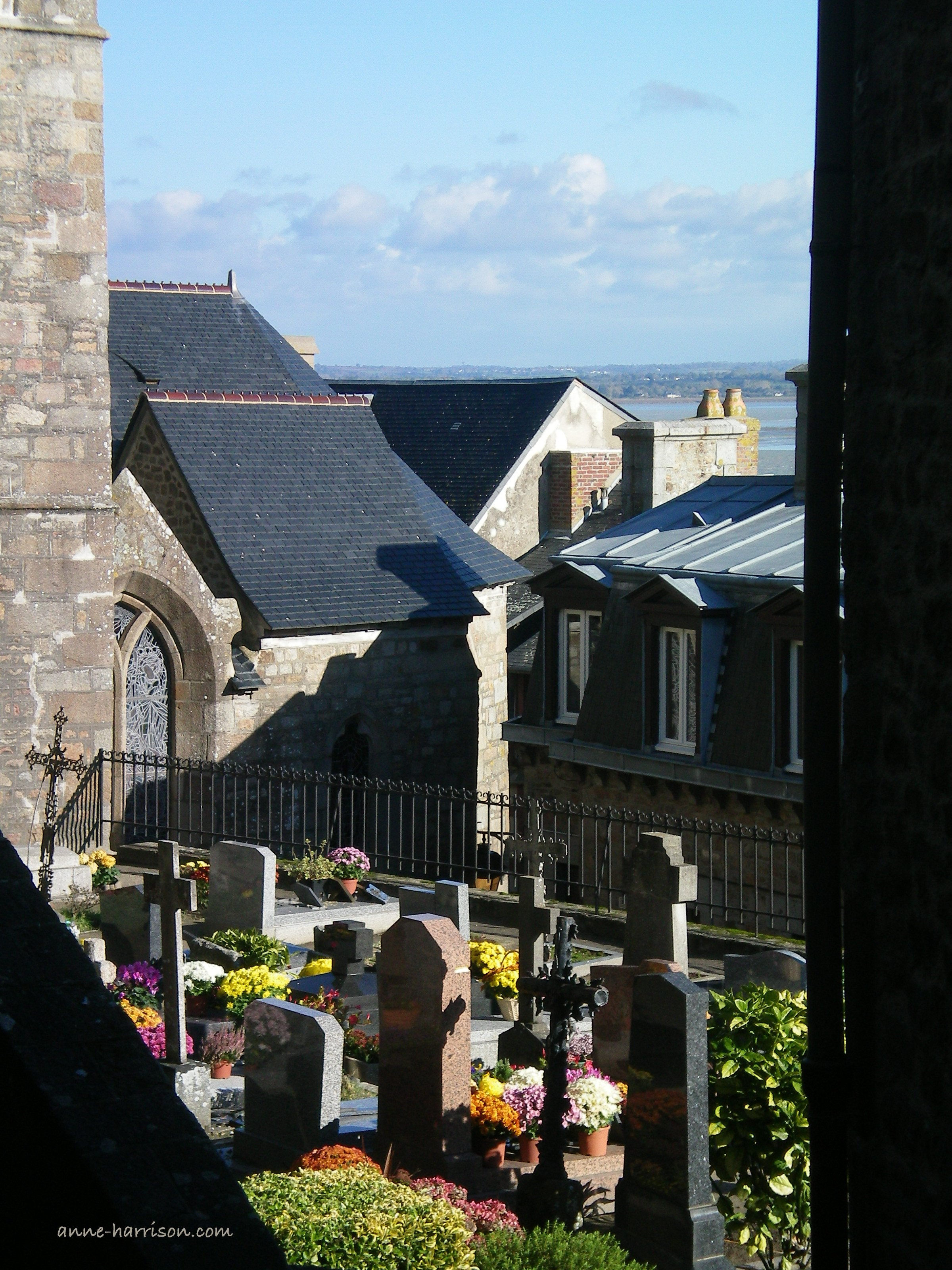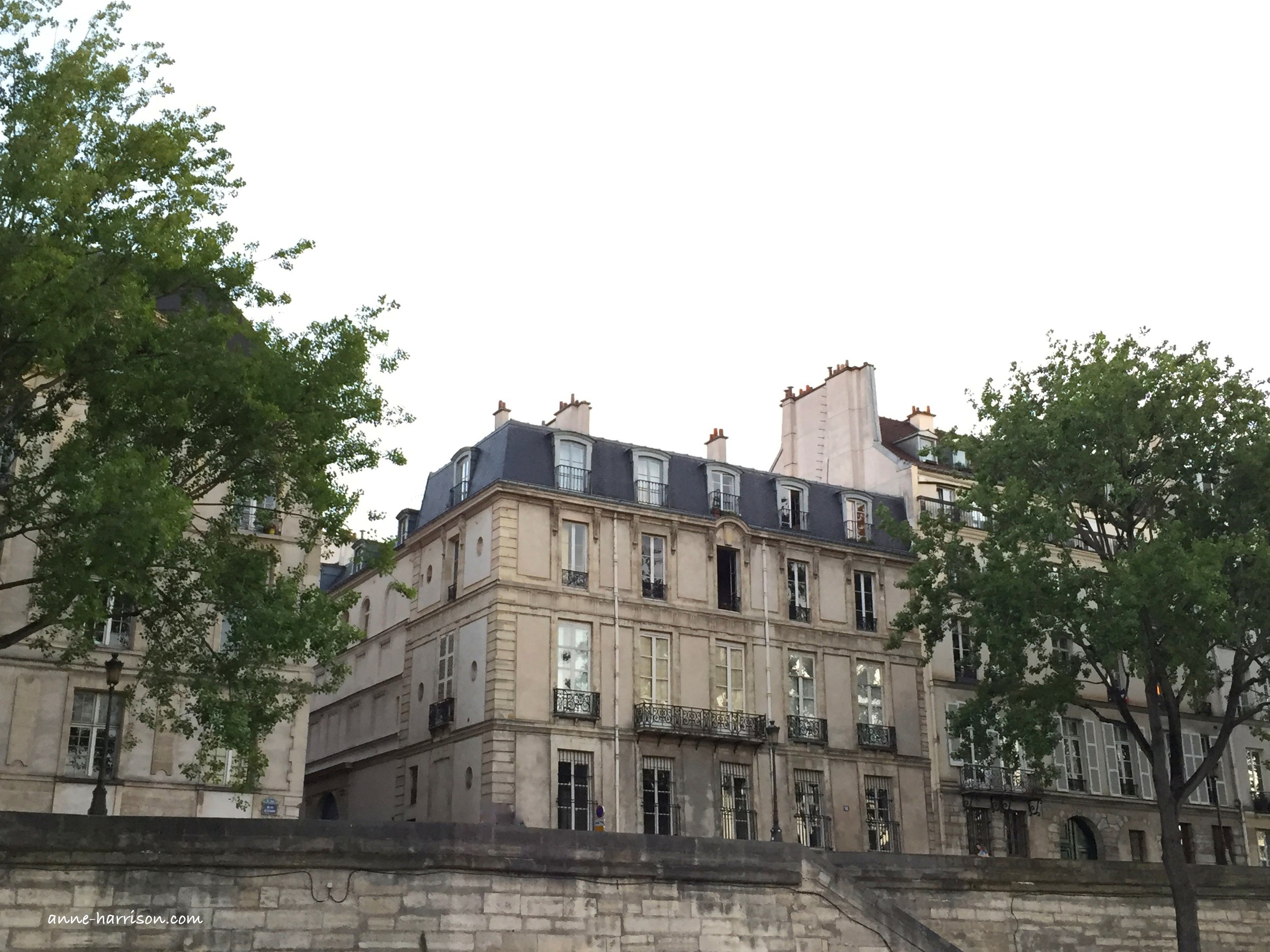Mont St Michel
An Earthly Image of Paradise
Viewing La Merveille from below the ramparts © A. Harrison
Against the darkness Mont St Michel rose from the sea, unchanged from medieval times when the island became a mystical emblem of the heavenly Jerusalem, an earthly image of paradise.
Like many a pilgrim before me, I crossed the causeway and entered through the Porte de l’Avancée, passing under the King’s Gate before wending my way along the Grande Rue. The only way around Mont St Michel is by foot. Along with Rome and Santiago de Compostela, Mont St Michel became one of the most important places along the pilgrim route. Countless men, women and children have trod these Paths to Paradise, praying for the Archangel Michel to grant them the assurance of Eternity.
With over three million visitors a year to the island, by day the Grande Rue can prove both crowded and noisy. In bygone times it stank. Now the aromas are more delicious, carrying the flavours of the sea or of the agneau de pré-salé (salt-meadow lamb) for which this part of Normandy is famous. Yet as darkness falls, the streets of Mont St Michel lie deserted, for most tourists stay on the mainland, and only some forty souls (or montois) live on the island.
Alleys dart off the main road, one so tiny I had to walk sideways. My hotel lay at the bottom of one of these lanes, hidden behind an unmarked door opened by an oversized key. This gave the first hint to the secret of the island; hidden areas, quiet places, unmarked walkways full of peace, away from the tourists. The spirit of the Mont can be felt in the most unexpected places of solitude — a small cemetery hidden halfway down the hill from the Abbey, a sheltered garden offering a place to sit in the sun. It also radiated from my room, which overlooked a small courtyard and onto the Baie du Mont St. Michel.
The view from the ramparts sweeps from Brittany to the cliffs of Normandy. The water swirls around the island in deadly currents, creating tidal flats of shifting quicksands which have claimed many an unwary pilgrim. In 1318, the Abbey recorded 18 deaths due to drowning. The Bayeux tapestry shows Harold, Earl of Wessex, rescuing two Norman knights caught in the quicksand during a battle with Conan II, Duke of Brittany; the Abbey floats in the background.
Indeed, Mont St. Michel truly floats. The three-tiered monastery, complete with its heaven-seeking spire, floats over the rocky hill, which itself seems to drift above the treacherous sands. That such an abbey could be built in such a place at such a time seems a miracle. Not surprisingly, the monastery, added to the Abbey in the 13C, is called La Merveille (The Miracle).
The tidal flats at low tide © A. Harrison
Until the 8th century, locals called the island Mont Tombe, but occupation of the island dates back to prehistoric times. The Celts once worshiped Belenus here, and the Romans built a shrine to Jove. Apparently, in 708 AD the Archangel Michel appeared to St Aubert, Bishop of Avranches, instructing him to build a church on the rocky islet. Realising the difficulties of the request, St Aubert ignored the Archangel’s instructions, until St. Michel burnt a hole in the bishop’s skull with his finger. A small church quickly rose on the rock.
In 966 some Benedictine monks settled in Mont St. Michel at the request of the Duke of Normandy. In the 11th century, the Romanesque Abbey was founded over a set of supportive crypts, and the first monastery buildings begun.
The three levels of the Abbey reflect the monastic hierarchy, designed around Rule of St Benedict. Established in the 6th century, this stipulated a life of prayer and work. The enclosed world of the monks resided on the top level; the Abbot entertained royalty and noble guests on middle level, whilst soldiers and pilgrims (known as miquelots) of a lower social scale were received and housed in the Almonry on the lowest level.
The entrance to the cathedral is through the fortified guardroom and up the Grand Degré to St. Gaultier terrace. The church lies to one side, the Abbey (still used by the Benedictines) to the other, the two linked by suspended passageways. Atop La Merveille floats the cloister, a place of prayer and meditation. The entire gallery arcade with its enclosed garden hovers between sea and sky. Amongst the slender columns are decorations of plants and animals, with the occasional human. The classic quincunx (or five point) arrangement of the cloister brings further grace to this peaceful spot, offering an ever-changing view over the bay.
Despite the inherent heaviness of the building, both the Abbey and the monastery prove places of light. Open terraces stretch towards the sea, and through a plethora of windows sunshine falls onto polished floors. The Knights Hall, which both runs under the cloister and supports it, was used by the monks for the transcribing of manuscripts (for which the island became famous). Elegant pillars march the length of the hall, and a large fireplace at one end kept hands warm and nimble.
Even the ramparts, which enclose the front of the island with impressive solidity, drift above the sea. They can be reached from the road via steep stairs, or through the various towers — such as the Liberty and Arcade Towers which once housed soldiers, or the King’s Tower beside the main gate. Some shops and cafes also open directly onto them.
At low tide, it is possible to walk around Mont St. Michel. The sand is a grey silt which wobbles gently underfoot before you slowly start to sink, should you move too slowly. Victor Hugo wrote how the tide sweeps in à la vitesse d’un cheval au galop (as swiftly as a galloping horse). A bell tolls when the surge begins for, like many a medieval pilgrim, people still drown making their way across the tidal flats. Out the back of the island lay some old forgotten ruins, and St Aubert’s chapel resides on an outcrop of rock. Just below it frolicked a young seal, on holidays from the open sea.
The causeway has recently been replaced, allowing the water to completely encircle the island at high tide. This will slowly wash away the silt of past centuries. Mont St. Michel will then become once more a true island, a magical place of delight for any who visit.
A old church beyond the town © A. Harrison
Enjoy my writing? Please subscribe here to follow my blog. Or perhaps you’d like to buy me a coffee? (Or a pony?)
If you like my photos please click either here or on the link in my header to buy (or simply browse) my photos. Or else, please click here to buy either my poetry or novel ebooks. I even have a YouTube channel. Thank you!
Some of my other posts you might enjoy:













Where else to begin exploring Paris but where the city began? Walking through the Île de la Cité covers some 4000 years of civilisation, from when the first Gauls settled here, to those living statues who pose each day outside the Notre-Dame for tourists.